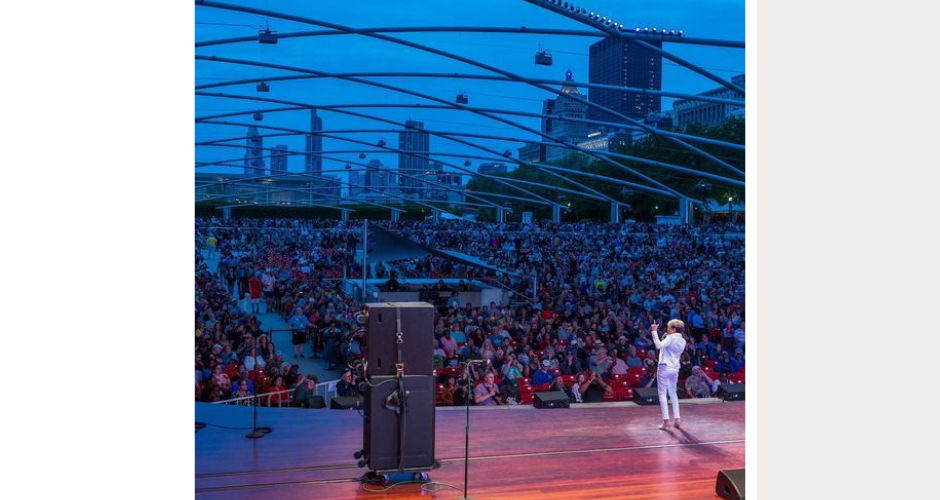Chicago’s summer festival scene is one of the most vibrant in the country. On any given weekend, residents will gather in their neighborhoods to celebrate the city’s few months of good weather by eating, drinking, or dancing. Green Music Fest, Old Town Art Fair, Ribfest, and EDM monolith Spring Awakenings were all taking place around the city this past weekend, attracting a mix of residents and tourists. However, the annual and long-running Chicago Blues Festival was by far the most popular event.
Table of Contents
Chicago Blues Festival
Since its inception in 1984, one year after the death of iconic blues singer and proud Chicagoan Muddy Waters, the three-day event has grown to become the world’s largest blues festival as well as Chicago’s largest music festival. Billy Branch and the Sons of Blues, Rhymefest, John Primer, The Real Deal, and Nellie “Tiger” Travis headlined this year’s Blues Festival, which drew about 500,000 people to its new site of Millennium Park. We had a great time at the Chicago Blues Festival, and here are five reasons why we think it should be recognized as one of America’s top public events.
You may sample some excellent barbeque and other culinary selections from local food sellers in addition to listening to amazing music. If you’re not from Chicago, take attention to the lineups at the food vendors, since they may indicate a popular item among the locals.
While the music is playing, have a look about at the audience since this event offers some excellent people-watching opportunities. Get fashion advice, witness some intriguing dancing movements, make fun of people’s attire choices, or be shocked by the behavior of attendees (in a good or bad way). It’s especially useful if you’re not close to the stage.
Festival Strategy
Over three festival days, musicians play on five stages at various times (and evenings). There are always at least two stages with performers performing at the same time, and the diverse acts ensure that there will be plenty of bands to enjoy.
The modest stages, with one exception, are strewn over the park and provide pleasant, intimate locations for listening to music. The Petrillo Music Shell, which is larger and hosts the headliners, is an exception. Rather than pitching your blanket in one spot, one of the greatest ways to enjoy the festival and hear from almost everyone is to walk about and catch different acts.
It’s Completely Free
While major festivals such as EDC, Coachella, and Sundance certainly put a burden on your wallet, the ordinary small festival is not inexpensive. A three-day festival may cost hundreds, if not thousands, of dollars, so having such a diverse musical and cultural event available for free was a tremendous pleasure.
Exposure
The city of Chicago is incredibly varied, and because blues music has its origins in the African-American community, there was a lot more ethnic variety than you’d find at other music festivals. Similarly, there was a wide spectrum of ages present, with almost every segment of society represented. The festival community has long struggled to extend its fan base and embrace diversity, but when you attend an event that succeeds, you can sense the potential for festivals to be truly significant public events.
Taking Advantage of Public Space
There aren’t many public sites as well-suited to organizing a huge metropolitan event as Millennium Park, with the exception of Detroit’s Hart Plaza. The ambitious and the astronomically costly civic project was finished in 2004 and hosted the inaugural Blues Festival this year. The park was built for an event of this size and type, with easy and quick public transit access, plenty of toilets, and wide-open entry and exits.
Four stages were crammed into a small, accessible location with little sound bleed and lots of shade. The park’s crown gem, though, is Frank Gehry’s colossal Pritzker Pavilion bandshell, which served as the primary stage. Millennium Park, which also houses the Art Institute of Chicago and the famed Cloud Gate sculpture (commonly known as The Bean), is one of America’s most well-known architectural creations, and it’s a joy to witness 500,000 people engage with it.
Atmosphere of Relaxation
Families hid from the sun behind trees all across the festival grounds, listening to the grizzled blues musicians shuffle through their jukebox. The festival’s laid-back, upbeat vibe was a welcome change from traditional music festivals, thanks to its position as a free event open to a diverse audience. Security was present but not always obvious, which was perhaps the ideal balance for such an occasion. People were sensibly drinking beer and wine and having a nice time since open container regulations had been graciously loosened.
Partners who have been carefully selected
Budweiser and Southwest were the festival’s main commercial partners this year, with local brewers Goose Island, the Chicago Tribune, Visit Mississippi, and the CTA (Chicago Transit Authority) also having a presence through branded activations or product shifts.
While an aggressively marketed Budweiser stage isn’t very noteworthy these days, Southwest set up a songwriting class at the rear of the Blues Village Stage and did an excellent job of blending in with its surroundings. There were also information booths aimed at conserving the tradition and handing it along to future generations.
Conclusion
Festivals bring people together who have like interests and are a terrific way for local businesses to engage with their customers. There are various ways to become involved, and consumer interaction may pay off in the long run. Don’t miss out to grab your opportunity at Chicago blue festival.




